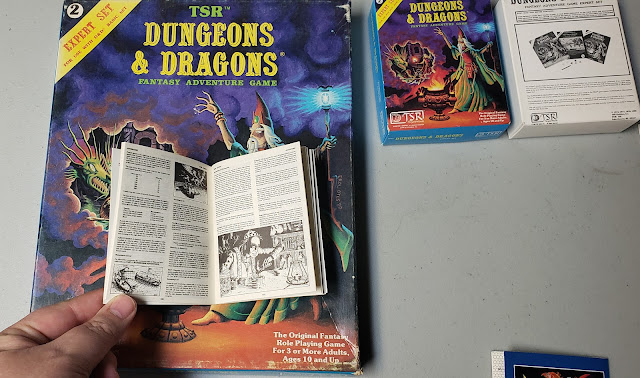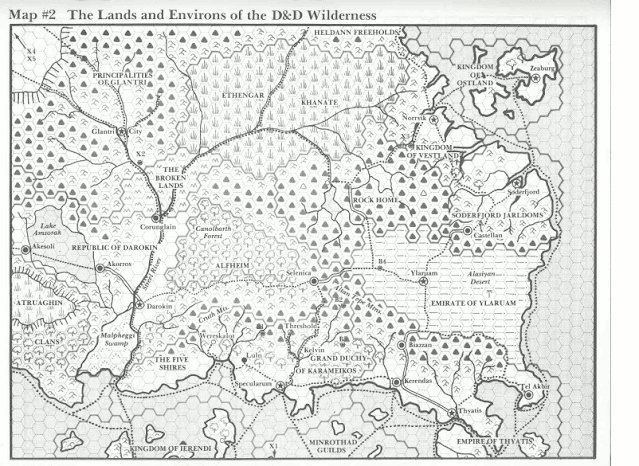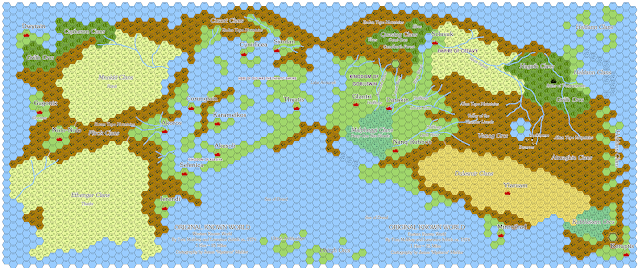While I have been ruminating on playing a witch again in a B/X era game I could not but help recall somewhere in the deep dark parts of my memory an article that tom Moldvay had done on witches in D&D. Sure enough, Dragon 43 from Nov. 1980 on page 8 had what I was looking for.
Tom Moldvay was a bit of scholar as well as a game designer.
Here are a few brief lists of his work.
- http://en.wikipedia.org/wiki/Tom_Moldvay
- http://www.pen-paper.net/rpgdb.php?op=showcreator&creatorid=694
- http://www.dragonsfoot.org/forums/viewtopic.php?p=423796
- http://index.rpg.net/display-search.phtml?key=contributor&value=Tom+Moldvay
He had a Master degree in Anthropology and was certainly acquainted with works of Margaret Murry. Even if her ideas and theories have been discounted by modern anthropologists, they were still in vogue at the time Moldvay was in school and writing for TSR, and you can see this in his Dragon article about witches.
According to Moldvay a witch class should include the following:
1. The ability to use herbs for healing and magic. 2. The power of fascination, like a super-charm ability. 3. A combination of both Clerical and Magic-User abilities. 4. The ability to practice sympathetic magic. 5. Be worshipers, in secret, of a religion otherwise forbidden in a particular era. 6. Powers based on nature and the cycle of seasons, similar to Druidic* powers.
I want to look at each of these in turn.
1. Ability to use herbs. Well to me this reads like a skill, but certainly at the time it was meant to be a class-feature. How would a witch do this in game? I would say herbal healing is a natural ability. The witch would need to find the herbs and then prepare them in a way to heal, say 1-4 hp +1 hp every other level. She could have some healing balms prepared ahead of time, say no more than 3 plus her INT or WIS modifier (4 to 6 for most PCs). I would argue that these balms are also of a nature that they can spoil if not used. So no matter how many are made the witch can only start the game with this number, never more. When these are exhausted she could look for herbs in the wild (requiring an INT check) and prepare them (requiring a WIS) check Game mechanics wise we don't want to rob what is a central element of the Cleric class, the ability to heal. Herbal healing needs to be non-magical; so great for wounds, not great for magical afflictions. Witches can take cure and healing type spells for that, but not so much to negate the need for a cleric.
I would extend this to include brewing of potions too and other forms of alchemy.
2. The power of fascination, like a super-charm ability. Again, this could be a spell, but it is worded like a class ability. If the ability is greater than the spell Charm, then it also needs to be a spell. The witch should be able to add her Charisma modifier to any charm-like spell. If this is a class ability then it behooves the witch to have a high Charisma.
3. A combination of both Clerical and Magic-User abilities. Again, not so much to make either class obsolete. The Basic Magic-User is as much Morganne le Fey and Circe as it is Merlin and Gandalf. The trick is not to give the witch powers that the Magic-User already has, but to highlight how they can be similar and still different. If you can be a class that can throw magical spells around and still heal like a cleric then why be a magic-user? The trick is to have enough overlap, but not too much. They will all have some spell in common, but keep some signature ones to themselves. Which I think is a good tie in to point 4.
4. The ability to practice sympathetic magic. Witches need to have something to make their magic more "witchy" and what is better than "Wool of bat" and "eye of newt"? Witches, regardless of what magic-users might be doing, HAVE to use material components. This can even be a good in-game difference. Clerics need their faith, Wizards rely on their intellect, but a witch needs something, either a small piece of the object she wants to affect or something that was in contact with it or somehow related to it. She wants it to rain? She needs to pour out a little bit of water to stimulate the elements to do her bidding. So control dolls, fetishes, strange and sometimes hard to some by items are needed by the witch to make her magic work. You can imagine that Clerics and Wizards look down on the witch and her "low magic" for needing such "props". I think that regardless of what is used as a spell component this will make the casting time of any witch spell longer than a similar wizard or cleric spell.
5. Be worshipers, in secret, of a religion otherwise forbidden in a particular era. This one is harder to pull off as it is written. Think about it, the D&D worlds are FULL of gods. Good ones, bad ones, greater ones, lesser ones, new gods, old gods, gods everywhere. One faith's cleric is another's witch if you get right down to it. So who are the witches worshiping? They need to go with things that are not gods. Demons, devils, ancient primordials, titans, even lords and ladies of the Fey courts, or maybe they believe in one Goddess and one God and all others gods and goddesses are only aspects of this great pair. This is what makes the witch different than a cleric. Clerics are granted power because they serve their deities purposes in the world. Witches are granted power, though not the same way, because they serve their patrons directly. While the origin of these power may be extra-planular or even divine, witches are essentially arcane spellcasters. They just don't learn this in mage schools.
This is something I tried to do in the 3rd Ed version of my witch class and what WotC does fairly well with their 4th Ed version Warlock. I called them Patrons, they call them Pacts. Pacts with Patrons. Works, more or less, but the idea is the same. You are giving up something of yourself to serve a "higher" power in exchange for magical power.
6. Powers based on nature and the cycle of seasons, similar to Druidic* powers. Now here is a tricky one. What Druid is Moldvay talking about? Do we mean the popular neo-pagan druids that most people think of when the word "druid" is mentioned? Does he mean the AD&D Druid with it's animal shape abilities? Or the semi-historical druid of legend that we still only know a little about? I have seen it mentioned that Druids are male and Witches are female, which is fine if one only is thinking of the neo-pagan versions of each. This would preclude archetypes like the Bandrui and Warlock. Plus when you look at it, the AD&D druid had some elemental focused spells, but nothing really on the cycle of seasons. I would conclude though from this that like the druid the witch would never have access to a Raise Dead spell, but only Reincarnate. Raise Dead would break the cycle of Life-Death-Rebirth and thus be an taboo. I would argue undead are the same way, but witches of Orcus would have little to do.
I think this is a good list and certainly one to consider if ever building a Witch class for any version of the game. But there are couple I think I would like to add.
7. Covens. While some witches have appeared by themselves there are others that have always appeared together. The weird sisters of Macbeth, the Stygian Witches all the way up to Piper, Phoebe and Paige, witches work together in a coven. Usually three, sometime more. A game mechanic needs to be in place to allow this to happen. It can even be as simple as some spells requiring three or more witches in order to work, or other spells that work better if more than one witch is casting. Not quite the Ritual Magic of d20 or even Ghosts of Albion, but something.
8. Ritual Magic. I think this is also a must.
I'll be posting more thoughts soon.











































